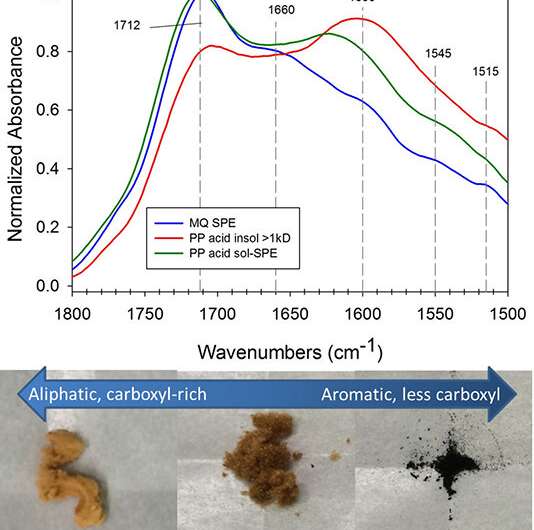New approach gets better view of carbon deeper underground

How does carbon behave when it is more than one meter (a bit more than 3 feet) below the land surface? For scientists, this has been a frustrating question. Why? The carbon levels this far down are typically 10 to 200 times lower than in surface soils. Such low levels pose a distinct challenge for analysis. Researchers developed a new approach that extracts better results. Their approach offers insight into how carbon behaves in low-carbon sediments.
The team obtained high-quality data using a new approach. Their work offers a way to study carbon in natural organic matter (a complex mix of compounds derived from decaying plants and other sources) in understudied low-carbon sediments.
The soils you find underfoot are typically 5 to 10 percent organic carbon. However, 3 feet and more below the surface, the organic carbon levels are 10 to 200 times lower. The typical techniques to measure the chemical characteristics of such carbon just aren't sensitive enough. Researchers evaluated five different types of chemical extractions to see if they could find a better way to obtain accurate measurements from two low-carbon alluvial sources, the sandy, gravely sediments along streams or rivers. Based on their results, they devised a new extraction and purification scheme.
The scheme uses sequential extraction with water and sodium pyrophosphate at pH 10. They combined the extraction with purification by dialysis and solid phase extraction to isolate fractions of sediment-associated natural organic matter. The method allows researchers to extract low levels of carbon from deeper soils.
Further, the team's work showed that carbon stability at this deeper level correlates with the carbon's greater metal complexation, molecular weight, and aromaticity.
More information: Patricia M. Fox et al. Characterization of natural organic matter in low-carbon sediments: Extraction and analytical approaches, Organic Geochemistry (2017). DOI: 10.1016/j.orggeochem.2017.08.009
Provided by US Department of Energy




















